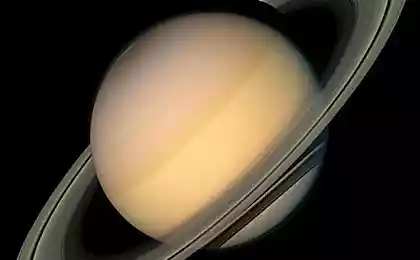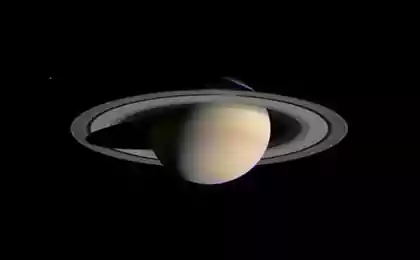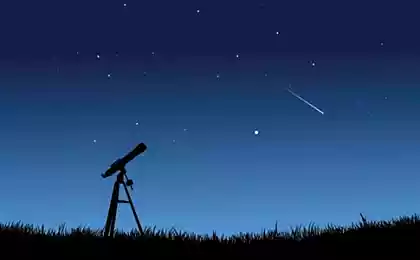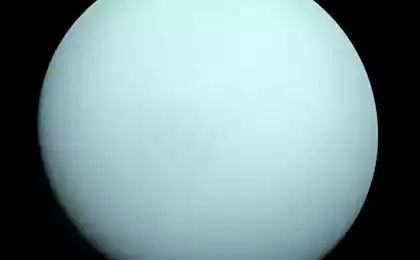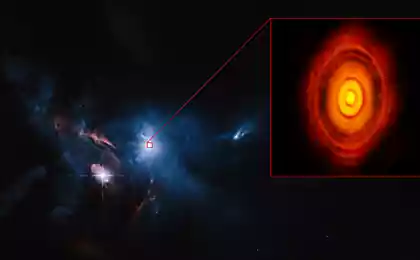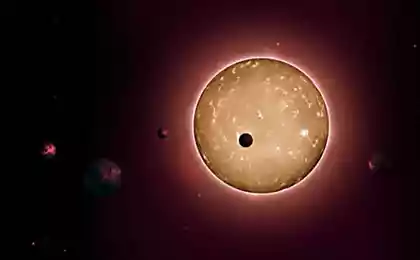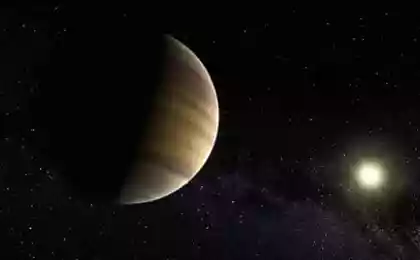820
Scientists have found a super Saturn with superrings
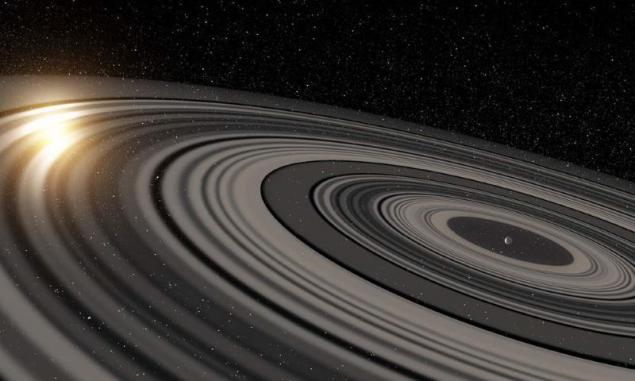
When Eric Mamaek (Eric Mamajek), an astronomer at the University of Rochester, said scientists familiar about his discovery - they just do not believe it. A discovery is to identify the most interesting of the planet, which is located at a distance of 430 light years from Earth. Diameter greater than the diameter of the planet Saturn or Jupiter in a few dozen times, but even that is not the most interesting.
The most interesting objects are the rings of the planet - their diameter is 200 times the diameter of Saturn's rings. Furthermore, this planet satellites have at least one satellite, the size of the Earth.
Superrings giant planets have been discovered after the analysis of documents Erik project SuperWASP . Scientists have discovered some strange thing: when the planet passed in front of its star, the luminosity of the star decreases not for a few hours (as usually happens in such cases) and for two months. In this case, the luminosity of the star changed - increases and decreases again.
It is clear that specialists interested in this strange feature of object J1407b, and try to understand why this is happening. On reflection, the scientists decided that this planet is extremely large ring system is much more extensive than that of Saturn.
Interestingly, the star around which the super-Saturn, very young, she is only 16 million years. Compared with our Sun, which has more than 4, 6 billion years, the star - just a baby. If the scientists are right in their assumptions that after some time, the system rings starts to decrease, and the material that makes up the system, will go to the formation of satellites of the planet.
Some scholars doubt the findings of Eric and doubts could vanish if anyone else saw a similar phenomenon (Finalizing stars passing in front of him planet with rings), but so far this is not happening. We can only wait until the planet once again be held in front of the disk stars - perhaps its orbit is quite large, and it is probable that the total turnover time is 10-15 years.
Now, astronomers hope to get from colleagues about similar cases in other star systems - when zvzda no apparent reason begins to change its luminosity, reducing her many times for a long time.
Source: geektimes.ru/post/245036/
A simple way to improve efficiency and avoid "wars for airing" in the office
Cult of razer: headset Kraken



